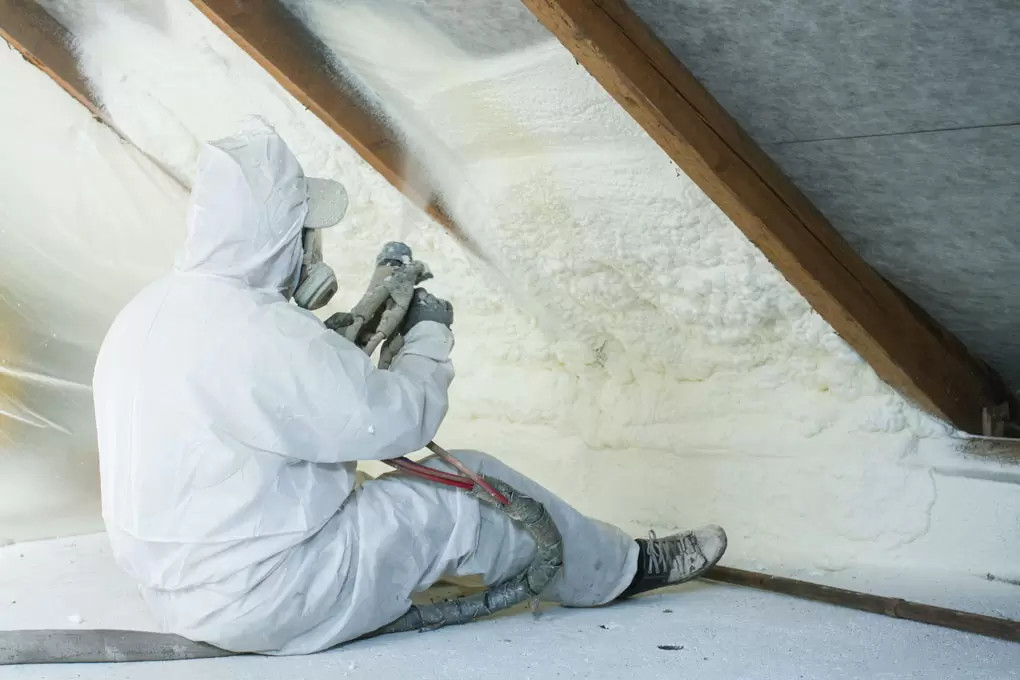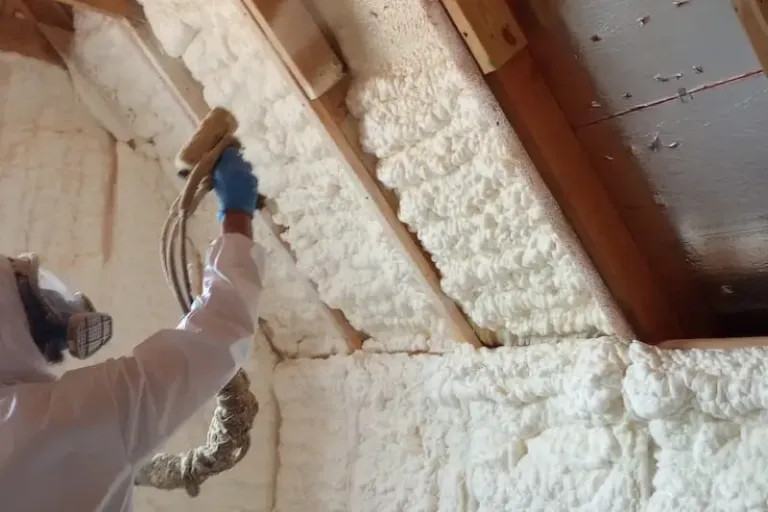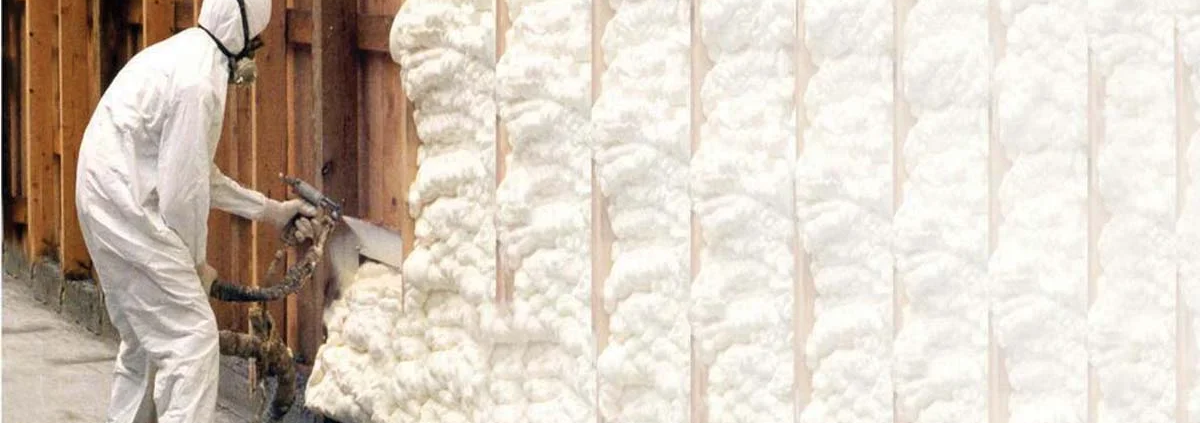What Makes Spray Foam a Long-Lasting Insulation Choice
What makes spray foam a long-lasting insulation choice is its fundamental nature as a modern, inert polymer combined with its unique application method. When properly installed, spray foam is expected to last for the life of the building, often 80 years or more. Unlike traditional insulation materials that can settle, sag, or be damaged by moisture and pests, spray foam is a stable plastic that does not degrade. It adheres permanently to the structure, maintaining its R-value and air-sealing properties for decades without any loss of performance. This “one-and-done” characteristic is what truly sets it apart as a permanent upgrade to a home’s building envelope.
This guide will explain the specific material science and practical factors that contribute to the exceptional durability and lifespan of professional spray foam insulation. The information is based on the hands-on experience of building performance professionals who understand that a truly effective insulation system is one that you should only have to install once.
The Chemical Stability of a Modern Polymer
The primary reason for spray foam’s longevity is its chemical makeup. Once the two liquid components are mixed and have cured, the resulting foam is a type of polyurethane, which is an inert and highly stable plastic.
It Does Not Decompose or Degrade
As a synthetic polymer, spray foam is not subject to the natural decay process that can affect organic insulation materials. It is not a food source for mold, mildew, or bacteria. It does not rot or break down from exposure to the air or the normal temperature and humidity cycles that occur inside a home’s walls or attic. The R-value and air-sealing performance that the foam provides on the day it is installed will be the same performance it provides 50 years down the road.
The Power of Adhesion
A major factor that distinguishes spray foam from other insulation types is that it does not just sit inside a wall cavity; it becomes a fully integrated part of the structure.

It Stays in Place Permanently
Spray foam is applied as a liquid that expands and adheres directly and powerfully to the building materials, whether it is wood studs, metal framing, or concrete. This tenacious bond is the key to preventing the most common forms of insulation failure. Unlike fiberglass batts, which can sag and pull away from the framing over time, or loose-fill insulation, which can settle and create uninsulated voids, spray foam stays exactly where it was applied. This ensures that the home’s thermal and air barrier remains complete and continuous, with no gaps or weak spots developing over the decades.
Bonus Tip: The rigid nature of closed-cell spray foam, combined with its powerful adhesive properties, can actually add a significant amount of structural strength to a wall or roof assembly. This makes the entire structure more durable and resistant to racking forces from high winds, adding another layer to its long-term performance.
A Resilient Barrier Against Environmental Factors
A key part of any material’s lifespan is its ability to withstand the common environmental challenges it will face inside a home. This is an area where spray foam, particularly the closed-cell variety, truly excels.
Resisting Moisture and Humidity
Moisture is the single biggest threat to the longevity and performance of most insulation materials. When fibrous insulation like fiberglass or cellulose gets wet, it clumps together, loses its R-value, and becomes a breeding ground for mold. Closed-cell spray foam is “hydrophobic,” meaning it repels water, and it is a non-permeable vapor barrier. This means that if a small roof leak occurs, the water will not damage the insulation itself. This resistance to moisture is a critical factor in its long-term durability.
An Inhospitable Barrier to Pests
Rodents and insects can cause a huge amount of damage to traditional insulation, tearing it apart to create nests and contaminating it with their waste. Spray foam is not a food source for pests, and its dense, solid structure makes it very difficult for them to tunnel or burrow through. Just as importantly, because it expands to fill every crack and gap, it seals off the small entry points that pests use to get into the home in the first place. An insulation that is not being physically destroyed by pests is an insulation that will last longer.
Here is a look at the typical lifespan and common failure modes of different insulation types:
| Insulation Type | Typical Lifespan | Common Reasons for Failure or Replacement |
|---|---|---|
| Spray Foam | 80+ years (life of building) | Extremely durable; only fails due to improper installation. |
| Fiberglass Batts | 15-30 years | Can be damaged by moisture, pests; can sag and create gaps. |
| Blown-in Cellulose | 20-30 years | Can settle and compact; highly susceptible to moisture damage. |
| Rigid Foam Board | 50+ years | Durable, but the tape used to seal the seams can fail over time. |

Things to Consider for a Long-Lasting Installation
While the material itself is exceptionally durable, the incredible longevity of spray foam is entirely dependent on one factor: the quality of the installation.
- A Professional, Certified Installer is a Must: Spray foam is a chemical product that is manufactured on-site. The installer must be a trained technician who knows how to manage the chemical reaction by controlling the temperatures and pressures of their equipment. A poor installation can lead to a foam that does not perform as advertised and will not have the expected lifespan.
- A Systems Approach to Building: The insulation is part of a larger system. Its lifespan can be affected by the condition of the rest of the home. For example, a professional contractor will always recommend that a homeowner have their roof inspected and in good condition before they insulate the underside of the roof deck.
- Choosing the Right Foam for the Right Place: The two types of spray foam have different properties. A professional knows that the waterproof, vapor-blocking closed-cell foam is the right choice for a moisture-prone area like a crawl space, while the sound-dampening open-cell foam might be used for interior walls. Using the right material in the right application is key to ensuring its longevity.
Bonus Tip: In a hot, dry climate like that of Las Vegas, the stability of spray foam under extreme temperature cycling is a major advantage. It will not become brittle or crack from the intense heat that can build up in an attic, ensuring it continues to perform for decades.
Common Questions About the Durability of Spray Foam
Does the R-value of spray foam decrease over time?
For modern, high-quality spray foams, the R-value is very stable. The foam is an inert plastic that does not degrade, so it will maintain its thermal resistance for the life of the building.
Will I ever need to add more insulation later on?
No. Unlike with older insulation that settles, spray foam is a “one-and-done” solution. The performance you get on the day of installation is the performance you can expect for the entire time you own your home.
What happens if the foam gets damaged?
Because it is a solid material, it is very durable. However, if a section were to be damaged during a renovation, for example, a professional can easily cut out the damaged section and seamlessly spray a new layer of foam to repair the area.
How does spray foam’s lifespan compare to my home’s other components?
Spray foam is one of the most durable products that will be installed in a home. It is designed to last as long as the structural wood framing itself, and it will likely outlast several roofs, HVAC systems, and sets of windows.
Final Thoughts on a Permanent Solution
Spray foam insulation is a long-lasting choice because it is a fundamentally different type of product. It is a modern, stable polymer that becomes a permanent, integrated part of the home’s structure. Its longevity comes from its inherent chemical stability, its powerful adhesion that prevents sagging and settling, and its resilience against the common threats of moisture and pests. For homeowners looking for a true, long-term solution to their comfort and energy problems, it is one of the most durable and reliable investments they can make.
Get a Professional Assessment for a Long-Term Upgrade
To learn more about how a permanent spray foam insulation system can benefit your home, the best first step is a professional evaluation. An experienced insulation contractor can provide a clear plan based on your home’s specific needs. For homeowners in the Las Vegas area, the team at Supreme Spray Foam LV has deep expertise in designing and installing long-lasting insulation systems built for the desert climate. They can be reached for a consultation by email at info@supremesprayfoamlv.com or by phone at (702) 904-9895.
Reviewer: Michael Carter reviewed this article using insight gained over 12 years in the spray foam business. His feedback focused on helping contractors reach new customers without overcomplicating their message.



Leave a Reply
Want to join the discussion?Feel free to contribute!